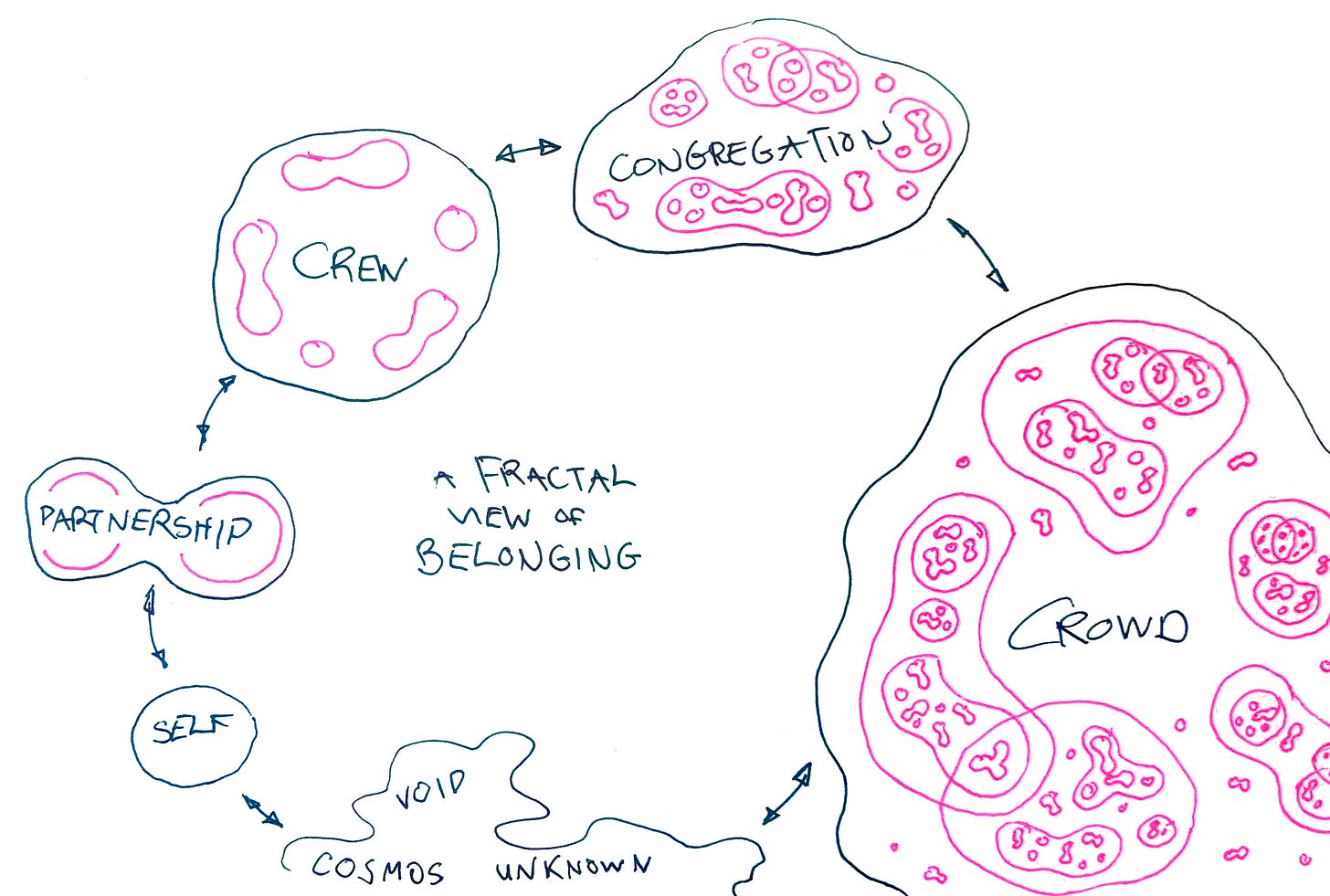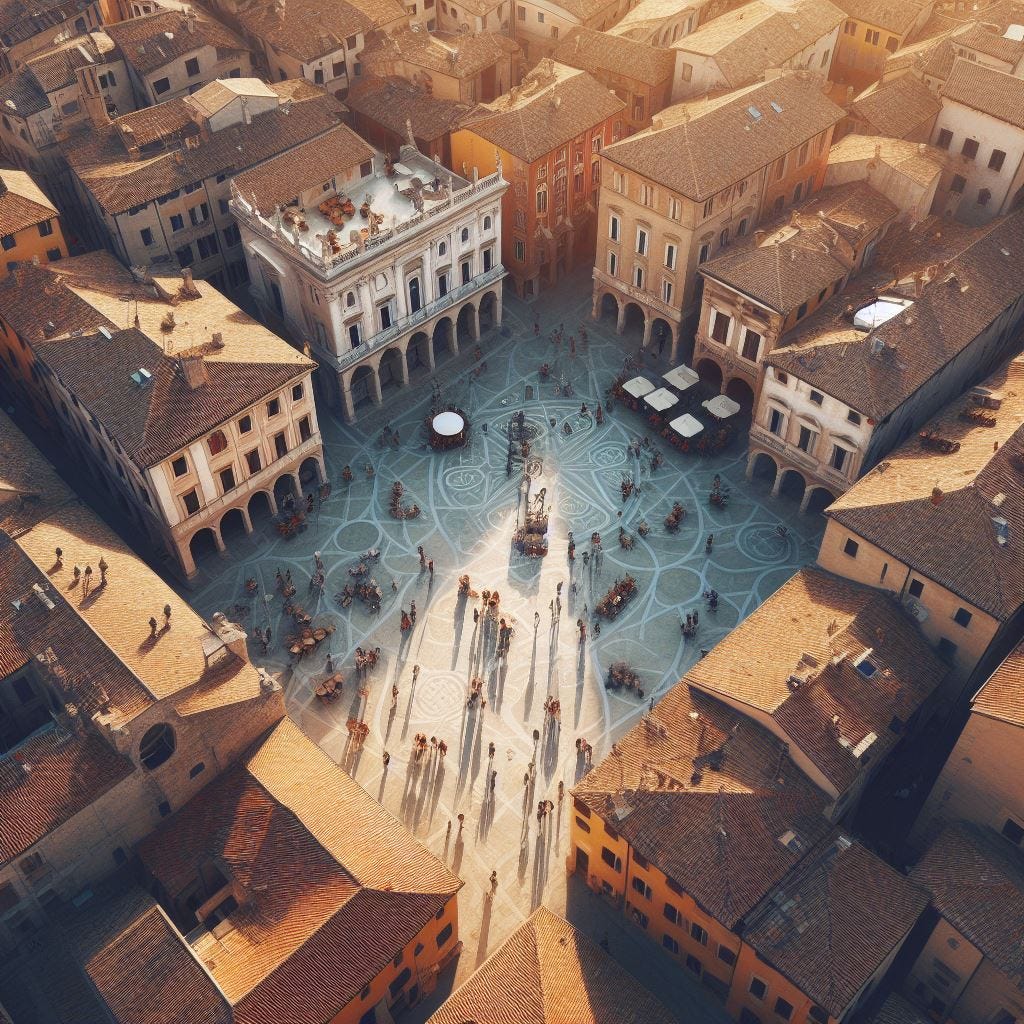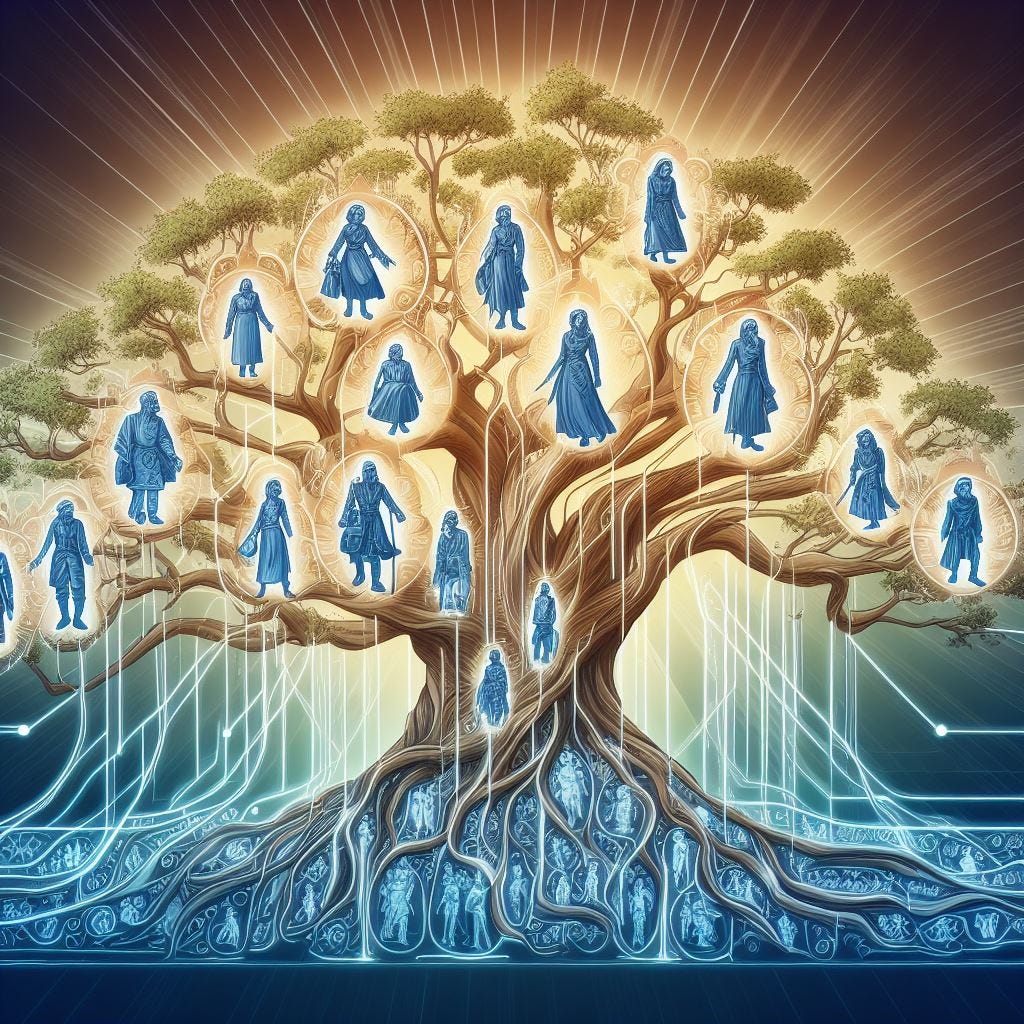On the surface, microsolidarity is a community-building framework, an engineer’s attempt to invent a cure for loneliness. But beneath the waterline, there's a deeper project.
If I’m honest, I am trying to change how you see and think about your self.
I want you to see your self as a superorganism. And I want you to see the superorganisms that you are part of. I want the perceived boundaries of your self to leak.
I want you to see how your agency is not a tidy black box contained inside the envelope of your skin, but distributed in a network, intra-penetrating with other people. I want you to feel the incorporeal beings steering your choices, and I want you to learn that you can steer their choices too.
It’s common knowledge that a person is made of organs, organs are made of tissues, tissues made of cells, cells made of molecules, right? The simple individualistic humanist frame treats the person as the seat of agency, the atomic unit of moral responsibility and choice-making.
I want you to see the limits of this model. Agency exists at micro- and macro-scales, the “person” is just one step on the ladder.
To my knowledge, nobody argues this better than developmental biologist Michael Levin. If you’re new to Dr. Levin, start with this 8 minute clip with him asking, Can cells think?
Levin’s “multi-scale competency architecture” describes the problem-solving competencies at each layer of the biological system, from cells to tissues to organs. Each layer is uniquely adapted to solving problems within its domain. Your brain is not a micromanaging boss directing the chemical interactions of each cell in your body; each layer is mostly self-managing and able to solve novel challenges. You are not born with a blueprint documenting all the paths of your circulatory system: your blood vessels have goals and creativity and they figure it out for themselves.
Just as a we can see the distinct layers of “cell”, “tissue” and “organ” at the micro-scales, I want you to see the distinct layers at the macro-scale. I want you to see that a group of 5 people is a distinct superorganism with distinct competencies. A group of 150 people is another species of superorganism, it can do other things.
You may be thinking to yourself, what the fuck are you talking about Rich? I can’t explain it, you have to see for yourself. Maybe I can give you some instructions to help you see like a superorganism.
People-Watching Games
Sit for a coffee. Notice the people walking across the plaza. Maybe there’s 100 people, but they’re clustered into 20 small groups. Imagine a physical envelope around each cluster (include their wheelchairs, dogs, kids etc). Watch the invisible springs holding the cluster together. Feel the surface tension of the bubble. Notice that each bubble maintains its own integrity and avoids crossing into the territory of every other cluster. They slide around each other like amoebae. Occasionally you get lucky and two bubbles combine, forming a bigger, slower, louder unit.
Can you see it? Can you see the stretchy-springy-flexy macrobeings walking-riding-rolling through the square, each person a limb?
Feeling the spirit of the group
In a room with 20 people, how does the group change when you drink a strong coffee? Notice how a laugh propagates across the superorganism. Notice how each of its limbs trips on the same awkward piece of furniture in the hallway.
How does it react to changes in music style and volume? What is the impact of different lighting levels? How does the group spirit change when you have a rough oval of 20 seats, or 5 clusters of 4? How does the group spirit react to empty space? to soft textures? to aromas?
Cultivating scale-sensitivity
Look for patterns: what is the biggest group that can hold a single conversation, with everyone engaged, and no formal structure, no facilitator, agenda, whiteboard? Is it bigger than 3? smaller than 10? How big is it?
How does a festival of 3000 feel different from 30,000? Are the strangers equally anonymous at each scale? How big is your mental address book? How many individuals can you recognise? How many tribes?
Questions for extra credit
Once you know how to see a group as a singular macrobeing, you can notice groups of groups in the same way. Fractal insight generator go brrrrrrrr. How many groups of groups did you see in the plaza?
What's a good name for the group-of-group-of-group-of-groups that contains all beings?
Can you stretch the time domain? Can you learn to see a family as one coherent creature persisting over centuries, a single spirit installed temporarily in individuals?
Can you see it?









I see it, I see it !!!
Really nice. My co-founder and I have been talking a lot about hierarchical modular networks—how information may be organized in complex systems—and thinking a about how this applies to a collective 'intelligence' in the plant kingdom or in a developed ecosystem (e.g. a old forest). I love your thoughts here as a parallel!